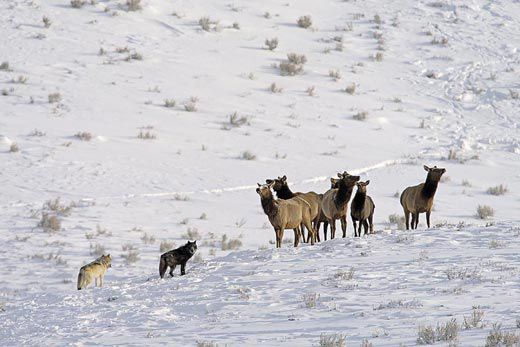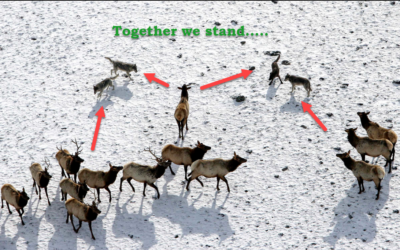-
 117,208
Abibisika (Black Gold) Points
117,208
Abibisika (Black Gold) Points
Yellowstone elk don’t budge for wolves

 Bakari Kwadwo, Nnemkadi and 2 others2 Comments
Bakari Kwadwo, Nnemkadi and 2 others2 Comments-
Beautiful
-
 22,824
Abibisika (Black Gold) Points
22,824
Abibisika (Black Gold) Points
@Ɔbenfo Ọbádélé
The heart of self-preservation weighed in the balance.
I ask myself why, how, and when…
It’s complicated in the land scape of fear, courage and strength in understanding?
Rather surprisingly, elk herd size breaks up into smaller units when wolves are around, said Creel, who had expected herd size to get bigger as a defense mechanism. “I think they’re trying to avoid encounters with wolves,” he said, by being more vigilant, moving into the timber and gathering in smaller herd units.
Now, 29 years later, a detailed study challenges that tale. What eased the impact of elk wasn’t fear of wolves, but a guild of predators, including human hunters, which killed enough elk to let vegetation partly recover, according to a new paper published today in Ecological Monographs. There is little evidence wolves frighten elk merely by their presence, the authors say. They even challenge the received wisdom that the park’s ecosystem has been restored.
How does Yellowstone elk keep wolves away?
Yellowstone elk don’t actively “keep” wolves away in the sense of a defense mechanism. Instead, they adapt their behavior based on the presence of wolves, primarily by being more vigilant and changing their movement patterns to avoid high-risk areas. This “ecology of fear” leads to shifts in their browsing habits and overall habitat use, ultimately influencing the ecosystem.
Here’s a more detailed explanation:
Increased Vigilance:
Elk become more alert and cautious when wolves are present, constantly scanning their surroundings for potential threats.
Shifting Movement Patterns:
Male elk, who are more vulnerable to wolf predation, tend to avoid areas where wolves have previously killed other bulls. Both sexes may also avoid areas like aspen stands in winter, where snow can slow their escape. They also avoid grasslands and areas where predators like cougars might be more active, according to a study by UGA Today.
Reduced Browsing:
The constant threat of predation leads elk to browse less intensely, as they don’t stay in one area for long. This can have a positive impact on the growth of willow and aspen trees, which were previously being overgrazed.
Impact on Habitat:
The combined effect of elk being less likely to stay in certain areas and being more vigilant allows for the return of vegetation in previously overgrazed areas. This, in turn, can lead to a healthier and more diverse ecosystem, benefiting other species as well.
In essence, wolves’ presence acts as a natural deterrent to elk, shaping their behavior and contributing to a more balanced and resilient ecosystem in Yellowstone National Park.
Prov 4:7
Wisdom is the first in priority, so get wisdom. And with all you have gotten, get understanding.
Men who are wolves dressed in sheep clothing are so destructive and dangerous!
https://www.science.org/content/article/predation-not-fear-wolves-keeps-elk-denuding-yellowstone
-



